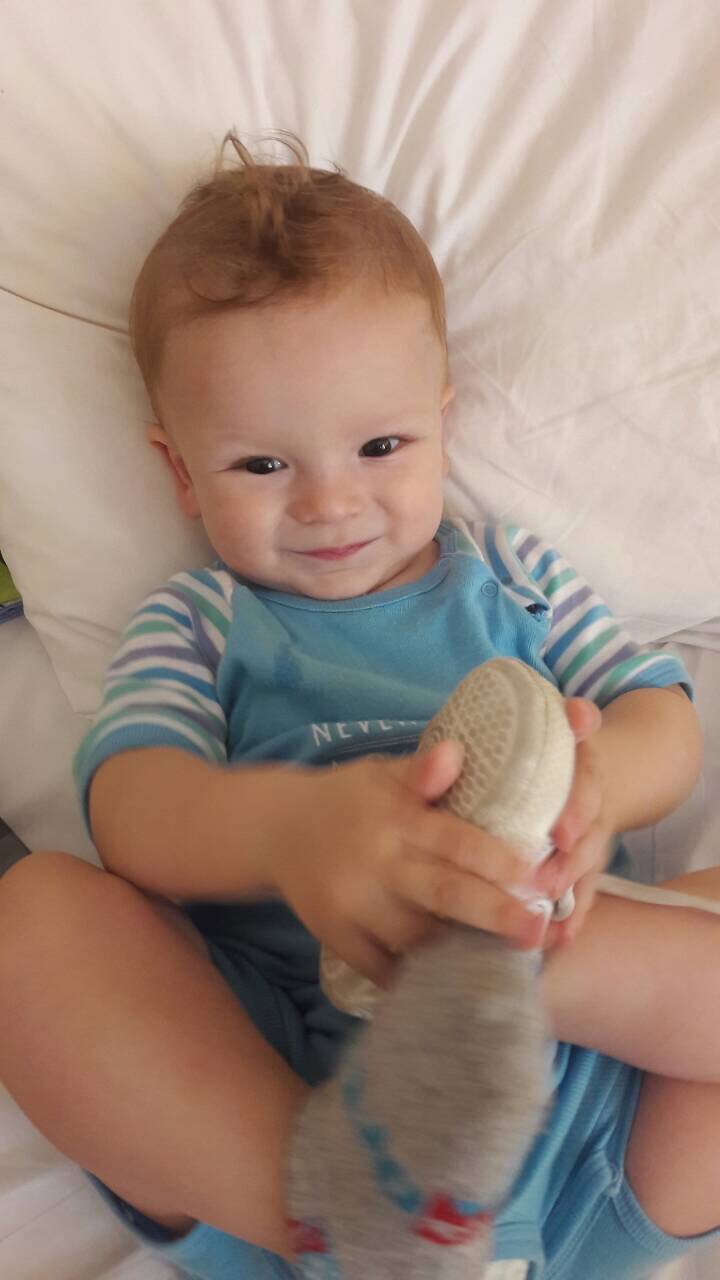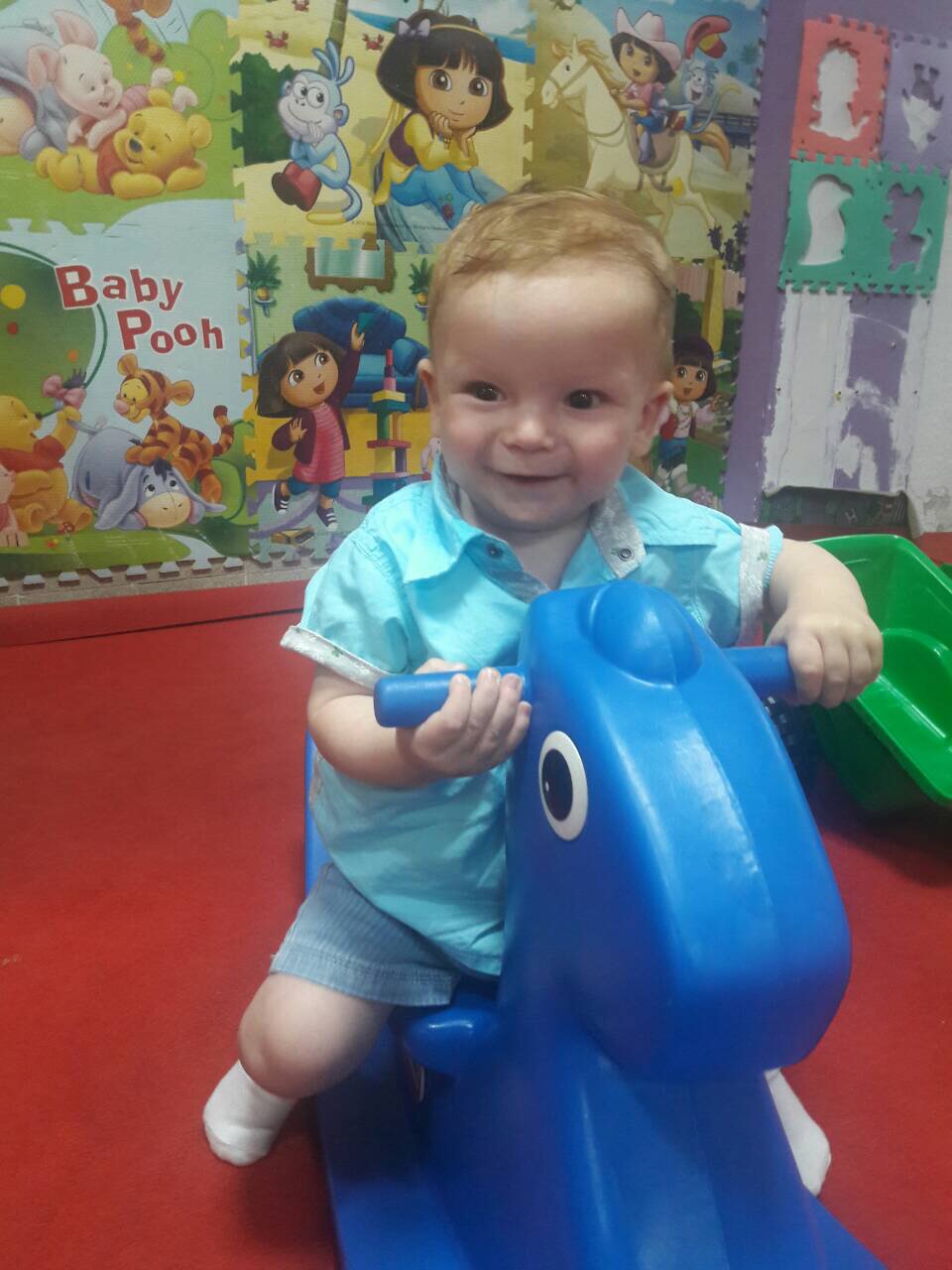Two weeks after the surgery - on holiday with mom and dad
Minutes after the surgery for removal of a kidney with congenital tumour and recovering from the anaesthesia, the eleven-month Slave was ready to crawl. The baby-friendly surgery was performed by Assoc. Prof. Dr. Deyan Anakievski from the Clinic of Urology at University Hospital "St. Marina" - Varna. This has been the first case in our country, in which the intervention has been performed not in the usual way, using a classic open surgery, but laparoscopically - through three 5 mm openings in the skin and 3 cm incision in the groin area, from where the damaged left kidney has been removed.
The eleven-month Slave comes from Macedonia. At his birth a tumour formation on the upper pole of the left kidney was detected. Initially, after the ultrasound examinations, a "hematoma" was diagnosed, and the patient was left for observation. Three months later the examinations indicated that the formation had increased in size. After nuclear magnetic resonance imaging and subsequent biopsy, a congenital tumour (congenital mesoblastic nephroma - classic type) was diagnosed. The parents were extremely worried about the fact that such formations require removal of the entire kidney. They had consultations with other medical doctors in Germany, Turkey, Serbia and France, where they were offered a classic open kidney removal surgery. After several months of searching and wandering, Slave's parents made the decision their child to be operated on in Bulgaria at the Varna University Hospital, and they put their trust in the hands of Assoc. Prof. Dr. Anakievski.
 |  |
In the day of leaving the hospital
| One week after the surgery |
The
little patient was accepted at the Department of Pediatric Oncology at
the Varna University Hospital for preoperative preparation on 24thJuly.
"I have performed plenty of laparoscopic surgeries so far, but in adult
patients only," said Assoc. Prof. Anakievski. "The major challenge for
us was to apply the most appropriate for the child anesthesia." The
surgery lasted 60 minutes. The post-operative period went on smoothly at
the Pediatric Resuscitation Department. On the third day the 11-month
patient was discharged from the hospital. The histopathology confirmed
the diagnosis - a conventional mesoblastic nephroma, which had already
been removed not through a large 10-12 cm incision but through several
small openings, and consequently the little Slave will be able to grow
up as a healthy child, with normal renal function.
"It's
not the individual it's the team that matters here. This is teamwork,"
believes Assoc. Prof. Anakievski. "And our team at the University
Hospital is complete. We have absolutely all the conditions and
specialists to meet the healthcare needs of the little patients,
beginning with pre-clinical preparation, surgical treatment and
post-operative resuscitation." According to Assoc. Prof. Anakievski, it
is absolutely possible and appropriate to perform other urological
interventions using this baby-friendly method, such as congenital
narrowing in the renal pelvis, congenital narrowing between the pelvis
and the ureter, bladder plastic operations in reflux, etc.
Congenital
mesoblastic nephroma is the most common benign tumour in newborns,
corresponding to approximately 3% of all kidney tumours in children.
Most often it is diagnosed during the first three months after the birth
(90% are diagnosed throughout the first year). The boys are more likely
to be affected than the girls (2:1). Three types of this tumour have
been known - classic (conventional), cellular and mixed type. In the
cases of surgical removal of the entire tumour, literature data usually
indicate excellent results.
Darina Velcheva
